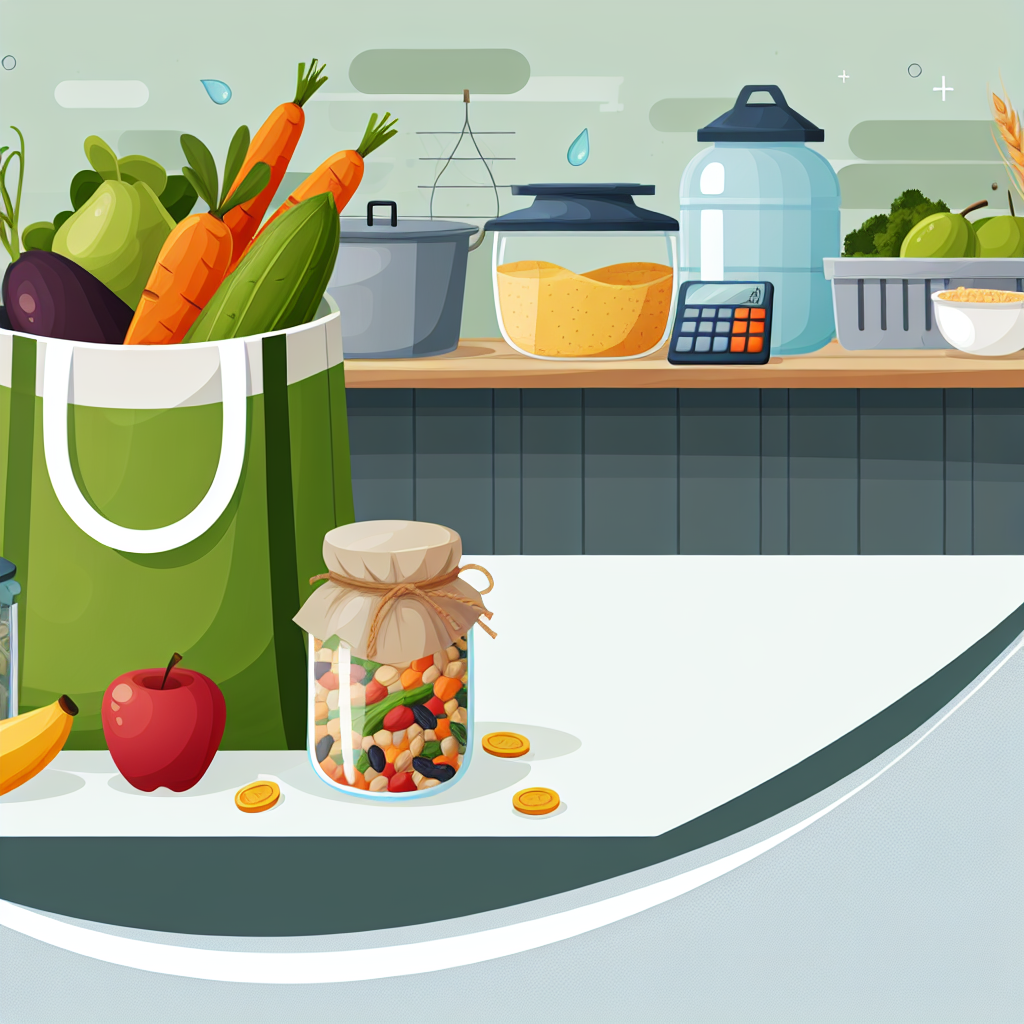How to Reduce Your Grocery Bill While Eating Sustainably: 10 Money-Saving Tips for Eco-Friendly Shoppers
Introduction
Hi there, budget-smart and planet-loving friends! 😊 Does your grocery bill have you feeling like your wallet is running out of money? You’re not alone! Grocery prices seem to be going up faster than a squirrel on espresso. We all know it’s important to keep our spending in check. But here’s the tricky part: How can you shop sustainably without emptying your bank account?
Welcome to the world of eco-friendly shopping, where saving the planet and saving money can go hand in hand! This post will guide you through easy tips that let you save the environment while saving money. Ready to dive into these helpful tips?
Understanding Sustainable Eating
First things first: What is sustainable eating? It’s all about picking foods that are healthy for both us and the environment. This means wasting less food, choosing local products, eating less meat, and picking eco-friendly packaging.
Why do it? Sustainable eating not only reduces your carbon footprint and saves natural resources, but it also fuels your body with healthy food. And guess what? There’s a common myth that eating sustainably costs a lot, like shopping for fancy organic foods. But, if you do it right, it can actually save you money!
Money-Saving Tips for Eco-Friendly Shoppers
You might be thinking, “Where do I start with this eco-friendly shopping spree?” Right here! Let’s check out these 10 tips that let you shop sustainably without spending too much.
1. Plan Your Meals
Meal planning is like having a superpower against a high grocery bill. When you plan meals for the week, you can avoid those moments when you think, “What am I going to cook?” Check out sustainable recipe apps or food blogs for ideas. Once you know what you’re cooking, buy just what you need and reduce the food you waste!
2. Make a Shopping List
A shopping list is your best friend, even more than your dog! (Sorry, Fido.) A list helps you focus on sustainable products and stops you from buying things you don’t really need. There are plenty of list-making apps, so why not try one? This way, you can prioritize items that are eco-friendly, like organic fruits or reusable products.
3. Buy in Bulk
Buying in bulk is as fun as popping bubble wrap but better for your budget and the environment. Grains, pasta, nuts, seeds, and even cleaning supplies can be bought in bulk, which costs less and cuts down on packaging waste. Just be sure to store your items in airtight containers to keep them fresh, unlike that old granola bar you found in your backpack from last fall.
4. Embrace Seasonal Produce
Eating strawberries in November may sound strange, right? That’s because seasonal produce is fresher, tastier, and usually cheaper (bonus!). Seasonal fruits and veggies don’t need as much shipping, which lowers their carbon footprint. Keep a calendar of what’s in season, and go for the freshest picks—think squash in autumn and cucumbers in summer.
5. Support Local Farmers and Markets
Want to be a local hero? Support your nearby farmers! Shopping at farmer’s markets or from farm stands reduces your food’s travel miles, helps the local economy, and gives you a reason to wear that cool sun hat. It’s also a great way to find fresh food and enjoy a healthy outing in your community.
6. Reduce Food Waste
Here’s a surprise: About one-third of the food made worldwide is wasted. 😱 Become a waste warrior by using up all your food. Get creative with leftovers or scraps—carrot-top pesto is delicious! Keep track of what’s in your pantry and fridge to use up what needs cooking first.
7. Opt for Plant-Based Alternatives
You don’t need to go fully vegan to help the planet. Cutting back on meat can greatly reduce your carbon footprint. Plus, plant-based foods are often cheaper. Think beans, lentils, and chickpeas—your meatless Mondays can turn into tasty taco nights!
8. Choose Eco-Friendly Packaging
Feel like an eco-superhero by choosing products with sustainable packaging. Look for glass jars, compostable materials, and refillable options instead of single-use plastics. For liquid items like soap and detergents, find places that let you refill your own containers. Hello, bulk refills; goodbye, wasteful packaging!
9. Utilize Coupons and Discounts
Time to show off your coupon skills and find some deals! Watch for discounts on eco-friendly brands, and use apps or loyalty programs that support sustainable shopping. But remember, don’t buy things you don’t need just because they’re on sale—stick to your list!
10. Grow Your Own Food
Create your savings in the garden—literally. If you have space (or even if you don’t—hey there, windowsill herbs), think about growing some of your own produce. A small garden not only saves money but also gives you fresh, organic food and a rewarding hobby.
Conclusion
Combining money-saving habits with eco-friendly shopping makes you a smart shopper. Start small, keep it simple, and slowly add these sustainable practices into your daily life. When it comes to saving money and helping the planet, every little bit counts.
So, what are you waiting for? Try these tips and let us know how it goes—we’d love to hear your green journey! Share your thoughts, tips, or any fun stories you might have in the comments below.
Additional Resources
- Books: Look for “Eating on the Wild Side” by Jo Robinson or “The Zero-Waste Chef” by Anne-Marie Bonneau.
- Websites: Check out Sustainable Table for more information.
- Apps: Try TooGoodToGo for reducing food waste and Paprika Recipe Manager for organizing meals.
With these tips, your mission of frugal and sustainable shopping is ready to take off. May your greens be fresh, your wallet be full, and your carbon footprint be light! Happy sustainable shopping, everyone! 🍏💚
